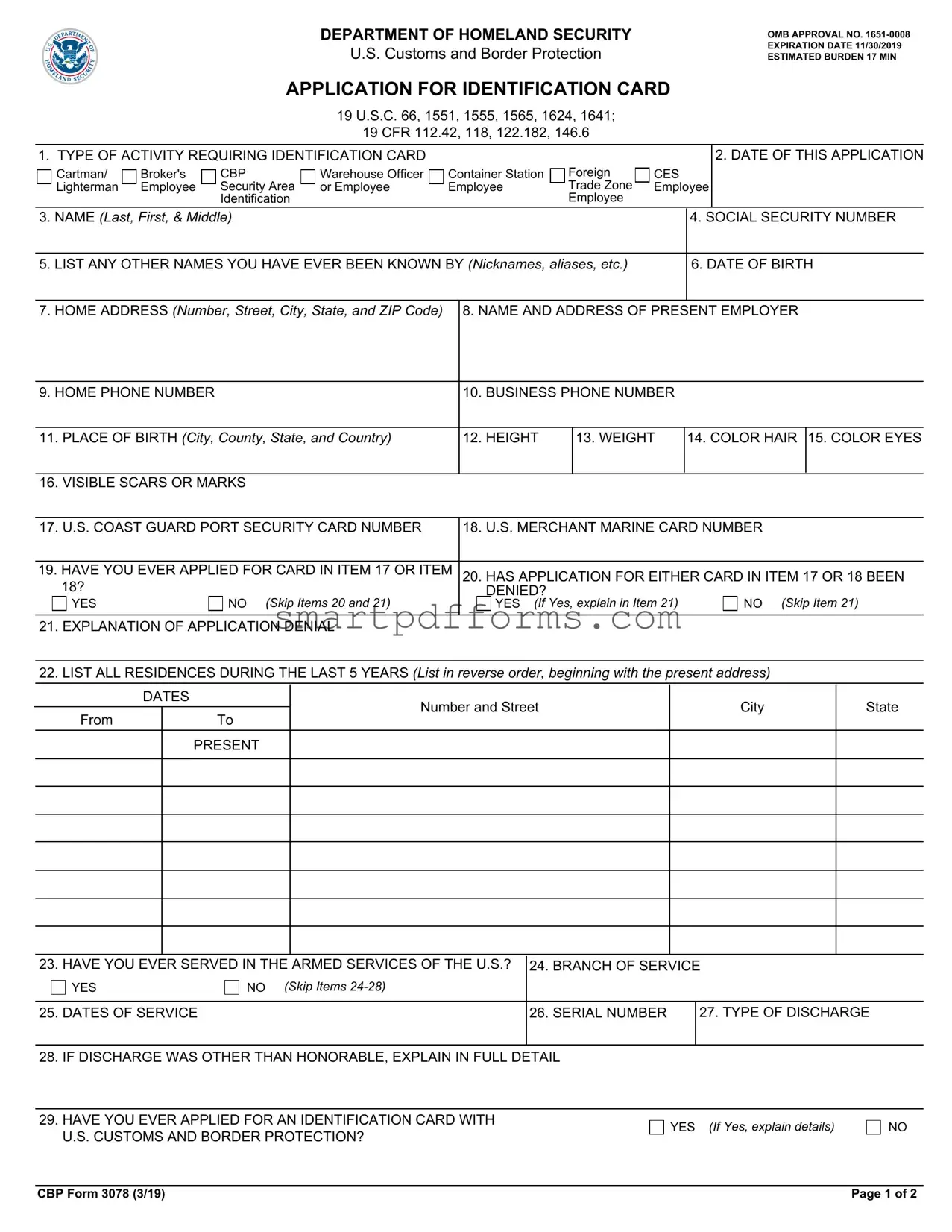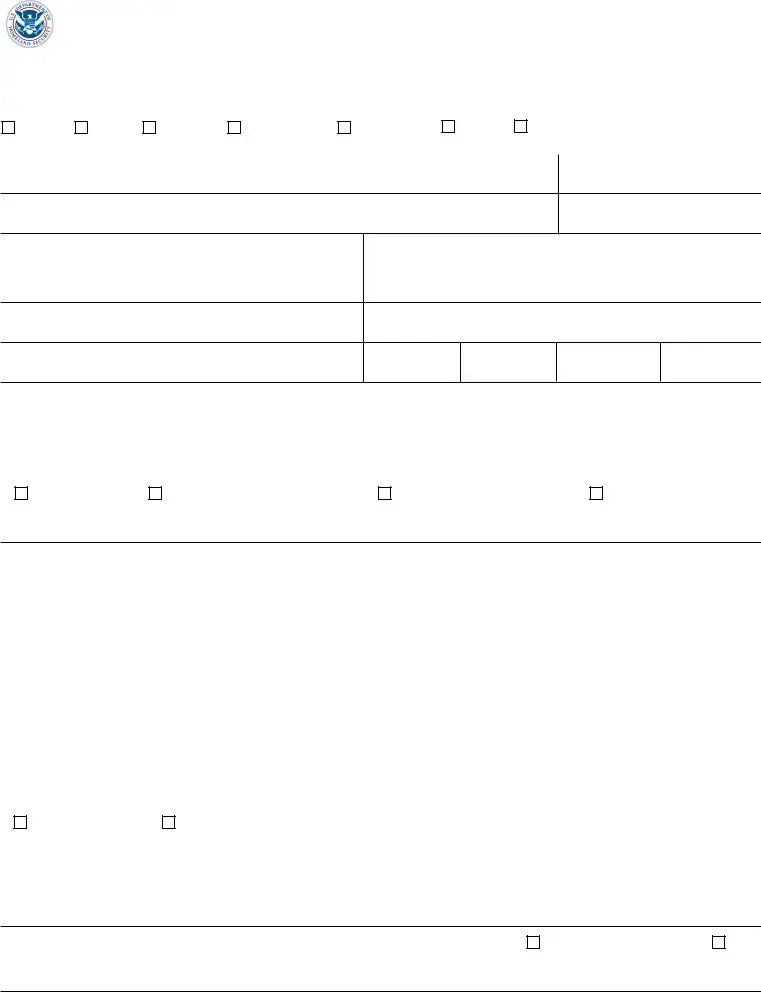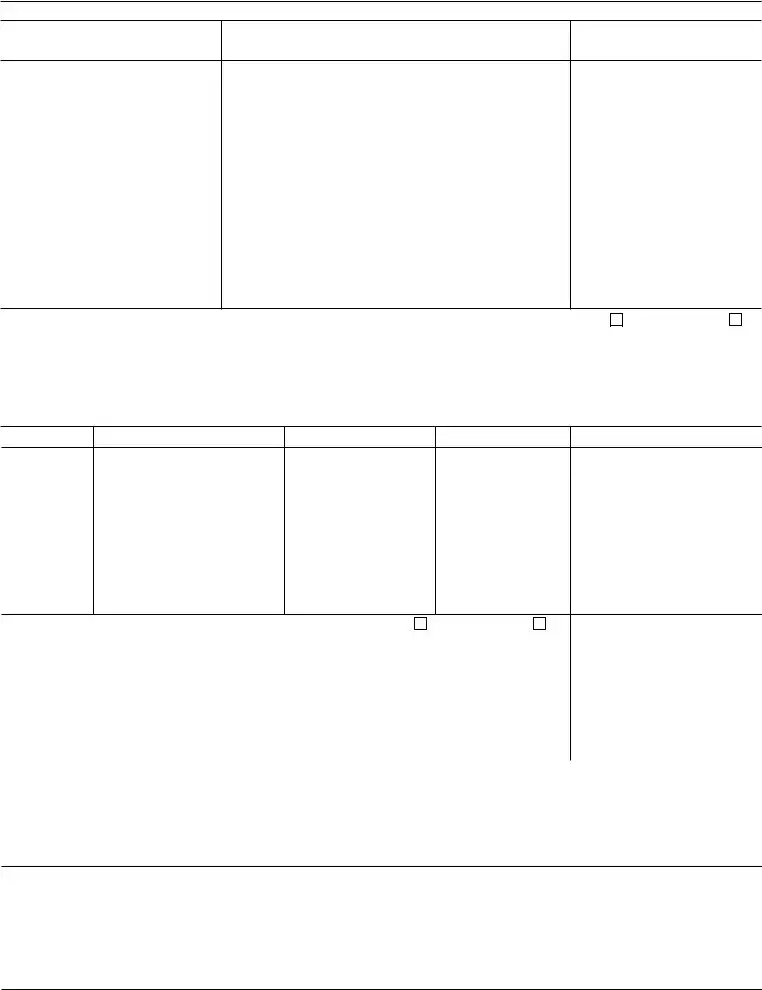The CBP Form 3078, as outlined by the Department of Homeland Security's U.S. Customs and Border Protection, plays an essential role in maintaining security and regulating access within various operational environments under the jurisdiction of the Customs and Border Protection. This multifaceted document is engineered to serve as a standardized application for an identification card, a necessary tool for individuals such as licensed cartmen, lightermen, and their employees, among others, to ensure they are recognized and authorized to operate within specific secure areas. Drafted to facilitate background investigations, the form inquires into personal details ranging from basic identification information, employment history, to more sensitive data such as criminal records and drug use, ensuring that applicants meet the stringent criteria set forth for card issuance. Furthermore, the form encompasses provisions for data sharing under designated "routine uses," highlighting its integral role in not just verifying individual credentials but also in safeguarding the broader interests of national security and operational integrity. Mandated disclosures regarding the collection and intended use of the information provided underscore the transparency and accountability measures embedded in the process, reflecting the meticulous approach adopted by CBP to maintain high standards of security and compliance.


